Here comes the thread about anti-tank guided missile (ATGM) guidance systems 🧵:
Thursday I did a thread about ATGM warheads & a thread about non-guided anti-tank rockets like the AT4 or Panzerfaust 3 (I will link these threads below); but now it's time for the big ones.
1/27
Thursday I did a thread about ATGM warheads & a thread about non-guided anti-tank rockets like the AT4 or Panzerfaust 3 (I will link these threads below); but now it's time for the big ones.
1/27
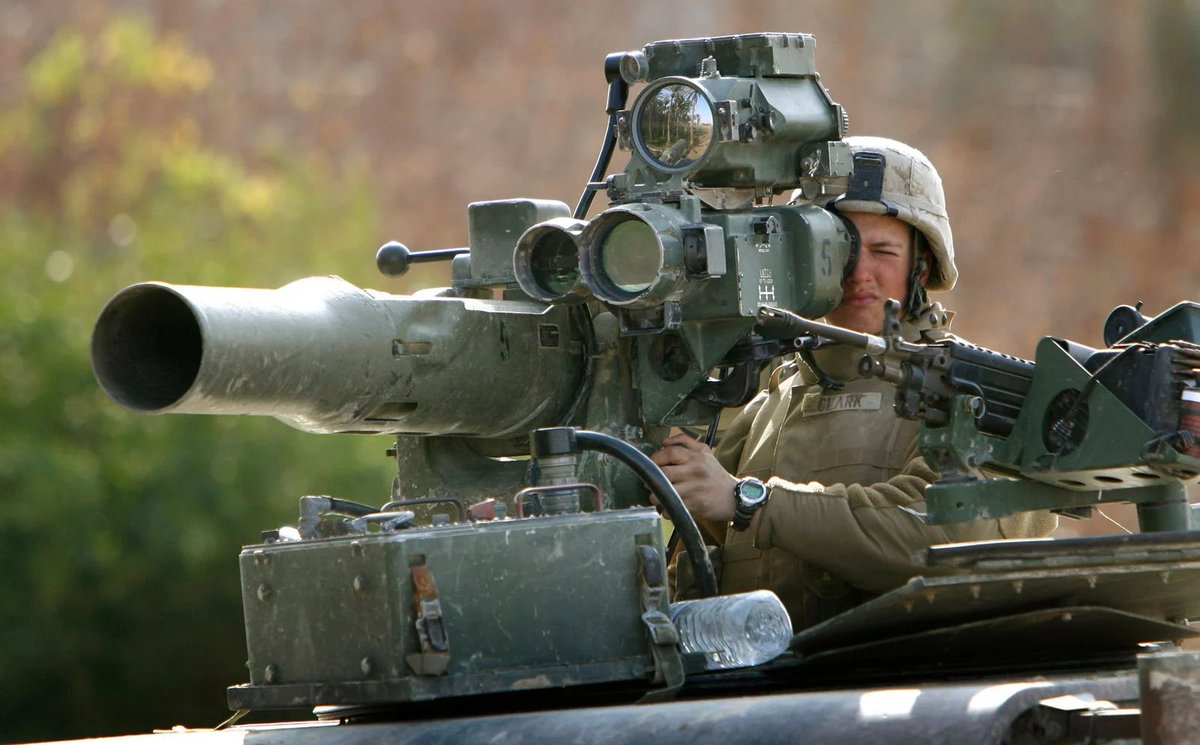
Let's begin with the Semi-Automatic Command to Line Of Sight (SACLOS) missiles, which we have to divide in two groups:
Direct attack:
🇺🇸 TOW, TOW-2A
🇫🇷 Milan, Eryx
🇷🇺 Konkurs, Metis-M, Metis, Fagot
Overfly top attack:
🇺🇸 TOW-2B
🇸🇪 BILL, BILL 2
2/n



Direct attack:
🇺🇸 TOW, TOW-2A
🇫🇷 Milan, Eryx
🇷🇺 Konkurs, Metis-M, Metis, Fagot
Overfly top attack:
🇺🇸 TOW-2B
🇸🇪 BILL, BILL 2
2/n

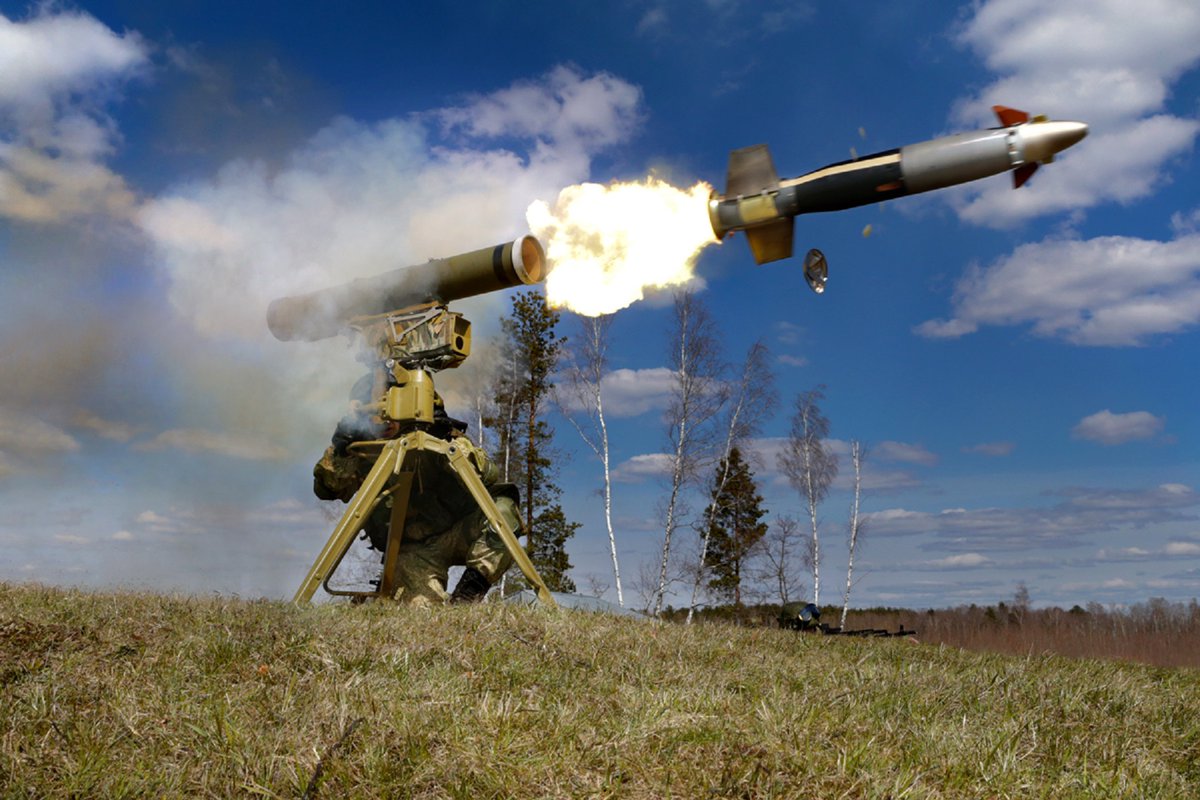


Simplified explanation of Semi-Automatic Command to Line Of Sight:
• "Semi" = the gunner has to aim at the target / keep it in his line of sight from launch to impact.
• "Automatic Command" = the launch unit tracks the missile and automatically sends steering commands to
3/n
• "Semi" = the gunner has to aim at the target / keep it in his line of sight from launch to impact.
• "Automatic Command" = the launch unit tracks the missile and automatically sends steering commands to
3/n
the missile to align it with the gunner's line of sight to the target.
The missile is tracked via an infrared beacon at the rear of the missile. In older missiles this was a simple flare activated at missile launch. As flares can be easily jammed by an enemy infrared source
4/n
The missile is tracked via an infrared beacon at the rear of the missile. In older missiles this was a simple flare activated at missile launch. As flares can be easily jammed by an enemy infrared source
4/n
modern missiles use infrared or electronic-flash lamps, which blink at coded frequencies randomly chosen by the launch unit.
TOWs, like this one used in Syria, use a Xenon beacon as short-wave infrared tracking source & a high-intensity thermal beacon as long-wave tracking
5/n
TOWs, like this one used in Syria, use a Xenon beacon as short-wave infrared tracking source & a high-intensity thermal beacon as long-wave tracking
5/n
source.
The steering commands are sent from the launch unit to the missile via a wire: either a thin copper or steel wire, which unravels from the missile during flight.
A short clip of a French Milan training ground, where you can see dozens of wires in the grass.
6/n
The steering commands are sent from the launch unit to the missile via a wire: either a thin copper or steel wire, which unravels from the missile during flight.
A short clip of a French Milan training ground, where you can see dozens of wires in the grass.
6/n
TOW missiles use two 3,750m long steel cables (the new RF variant uses a one-way radio link). Wires can't be jammed, but they can be entangled by trees or other obstacles.
SACLOS is a proven design, but with a few drawbacks: in smaller missile designs the wires limit the
7/n
SACLOS is a proven design, but with a few drawbacks: in smaller missile designs the wires limit the
7/n

range and for the duration of the flight the operator has to remain exposed to aim at the target, like this Ukrainian Milan operator.
To guarantee a stable line of sight most SACLOS missiles come with a heavy tripod, which is why i.e. the US Army today uses TOW missiles on
8/n
To guarantee a stable line of sight most SACLOS missiles come with a heavy tripod, which is why i.e. the US Army today uses TOW missiles on
8/n

on Humvee, Strykers, and Bradleys. If you look closely at these TOW missiles, you will see they have different cone shapes: direct-attack TOW-2A and overfly top attack TOW-2B missiles.
TOW-2A missiles have a extendedible probe with a precursor warhead to defeat Explosive
9/n



TOW-2A missiles have a extendedible probe with a precursor warhead to defeat Explosive
9/n



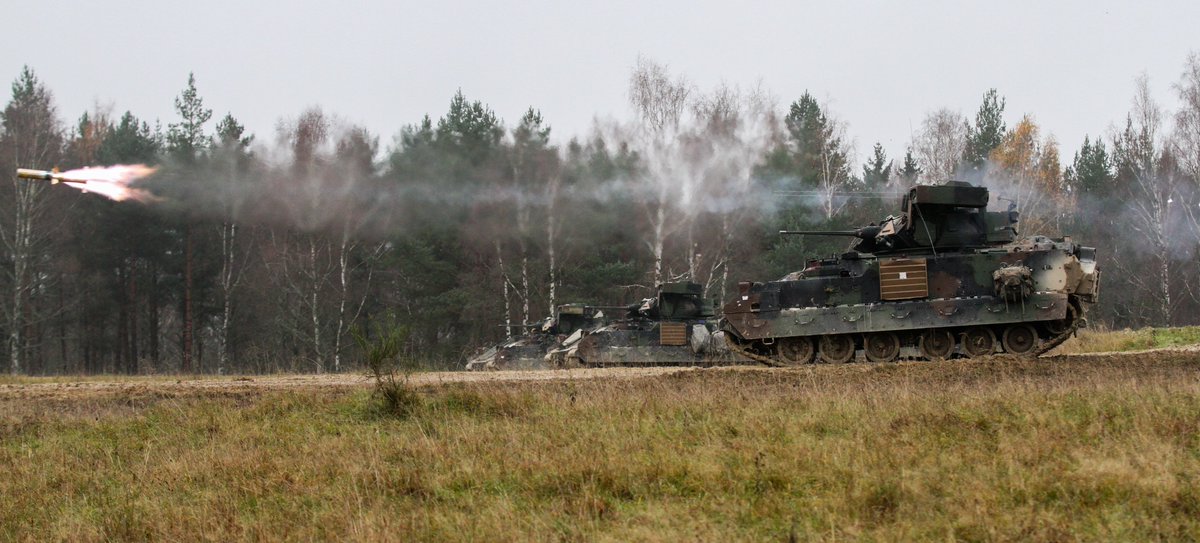
Reactive Armor before the main HEAT warhead is detonated.
TOW-2B missiles have a sensor unit at the front, which uses laser profilometers and a magnetic sensor to recognize when it flies over the target and then detonates the missile's two Tantalum EFP warheads.
10/n

TOW-2B missiles have a sensor unit at the front, which uses laser profilometers and a magnetic sensor to recognize when it flies over the target and then detonates the missile's two Tantalum EFP warheads.
10/n

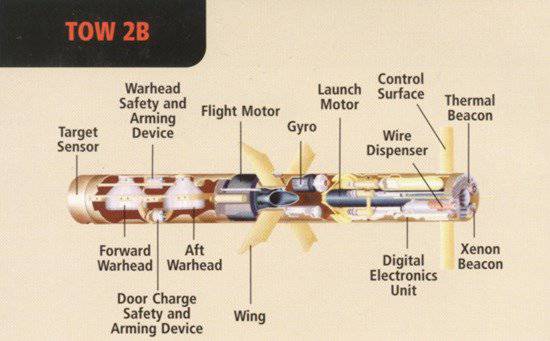
If you have not yet read my thread about HEAT and EFP warheads, below is the link to it:
Overfly top attack missiles like the TOW, BILL, and BILL 2 have the advantage that an enemy target doesn't need to be fully visible for them to hit it.
11/n
Overfly top attack missiles like the TOW, BILL, and BILL 2 have the advantage that an enemy target doesn't need to be fully visible for them to hit it.
11/n
https://twitter.com/noclador/status/1636388484880683014
This is especially useful against an enemy that has built fortifications, behind which tanks can hide in hull down position like this Leclerc:
Fire at the visible part and SACLOS will steer the missile 1 m above the line of sight until the sensors detect the tank below.
12/n
Fire at the visible part and SACLOS will steer the missile 1 m above the line of sight until the sensors detect the tank below.
12/n

Another way to destroy hull down tanks are top attack missiles:
Fire & Forget:
🇺🇸 Javelin
Fire & Forget / Fire, Observe & Update:
🇮🇱 Spike (MR, LR, ER)
🇫🇷 Akeron
The Javelin is the only pure Fire & Forget anti-tank guided missile. Once the Javelin's Command Launch Unit
13/n



Fire & Forget:
🇺🇸 Javelin
Fire & Forget / Fire, Observe & Update:
🇮🇱 Spike (MR, LR, ER)
🇫🇷 Akeron
The Javelin is the only pure Fire & Forget anti-tank guided missile. Once the Javelin's Command Launch Unit
13/n




has acquired a target the Javelin launches and its gimbal mounted imaging infrared seeker automatically pursues the target.
Meanwhile the Javelin rises to 160m, flies towards the target, and once above it dives onto to it and detonates its tandem HEAT warhead.
14/n
Meanwhile the Javelin rises to 160m, flies towards the target, and once above it dives onto to it and detonates its tandem HEAT warhead.
14/n

The drawback of the Javelin is that the operator needs to have a clear line of sight to the target before launch, but one of the main advantages of the Javelin is that the operator can immediately get up and take cover once the missiles is launched.
15/n
15/n
The Spike and Akeron can be used as a Fire & Forget missile too... but their main advantage is that they can lock on at a target after launch.
After launch both missiles rise in the air and their gimbal mounted infrared/CCD sensors acquire video of the battlefield, which is
16/n



After launch both missiles rise in the air and their gimbal mounted infrared/CCD sensors acquire video of the battlefield, which is
16/n




sent back to the launch unit through a unraveling optical fiber cable. (Spike ER missiles have an 8 (!) km cable.)
Here is a video of Azerbaijani Spike gunners flying over Armenian units, picking out the most valuable targets, and guiding their missiles onto these targets.
17/n
Here is a video of Azerbaijani Spike gunners flying over Armenian units, picking out the most valuable targets, and guiding their missiles onto these targets.
17/n
That Israel forbids European nations to deliver some of their 20,000 Spike missiles to Ukraine is disgusting and hampers Ukrainian combat capability.
Now to the only true laser beam riding anti-tank guided missile. The russian Kornet. Laser beam riding requires a direct
18/n
Now to the only true laser beam riding anti-tank guided missile. The russian Kornet. Laser beam riding requires a direct
18/n

line of sight to the target and the operator has to keep aiming the laser at the target until impact.
And it is not really a laser beam, it's more like a laser grid and a laser receiver at the end of the missile determines the missile's position within that grid. The missile
19/n
And it is not really a laser beam, it's more like a laser grid and a laser receiver at the end of the missile determines the missile's position within that grid. The missile
19/n

then calculates the required steering commands to move itself to the grid's center, which aligns with the operator's line of sight to the target.
Supposedly also Ukraine's Corsar and Stugna-P missiles are laser beam riding... but publicly available info is contradictory
20/n

Supposedly also Ukraine's Corsar and Stugna-P missiles are laser beam riding... but publicly available info is contradictory
20/n
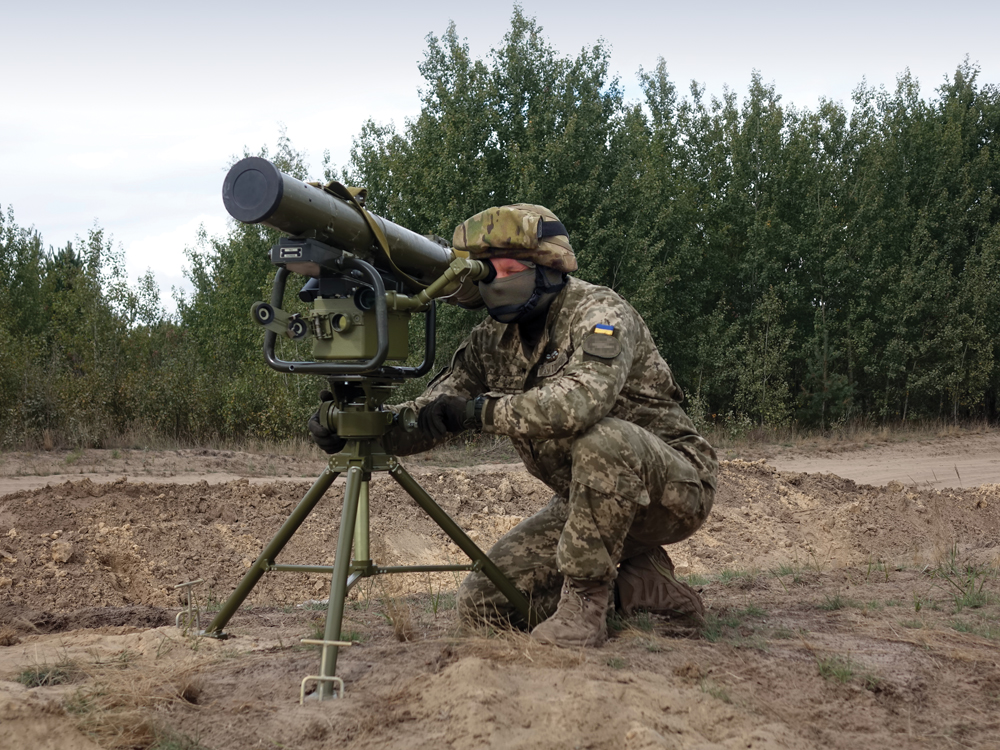

and the missiles' design seems to point to both being laser-guided SACLOS missiles.
All Luch Design Bureau missiles have a laser receiver and an infrared beacon at the rear, as i.e. the 130mm & 152mm Skif/Stugna-P missiles in this photo (right side: upper and lower missile)
21/n
All Luch Design Bureau missiles have a laser receiver and an infrared beacon at the rear, as i.e. the 130mm & 152mm Skif/Stugna-P missiles in this photo (right side: upper and lower missile)
21/n

This makes it likely that Ukraine's own ATGMs use the laser (instead of a wire) to send steering commands calculated by the launch unit to the missiles.
If this assumption is correct then neither Corsar nor Stugna-P are laser beam riding missiles. If anyone has more info,
22/n
If this assumption is correct then neither Corsar nor Stugna-P are laser beam riding missiles. If anyone has more info,
22/n
that can be shared without damaging operational security - please comment below this thread.
Now to our last two guided missiles: the Spike SR and NLAW.
Both are shoulder launched, short range, fire and forget systems. The main difference is that the NLAW is an overfly top
23/n

Now to our last two guided missiles: the Spike SR and NLAW.
Both are shoulder launched, short range, fire and forget systems. The main difference is that the NLAW is an overfly top
23/n


attack missile, which fires a Tantalum EFP warhead downward, while the Spike SR is a direct attack missile, which uses a tandem HEAT warhead.
Both use optical and magnetic sensors to ignite detonation, with the NLAW having downward looking laser sensors and the Spike SR
24/n
Both use optical and magnetic sensors to ignite detonation, with the NLAW having downward looking laser sensors and the Spike SR
24/n
having forward looking infrared sensors. Due to their short range both systems have limited, automatic steering to compensate for the possible movement of a target. Both systems could be described as the Javelin's little Fire & Forget siblings.
This almost concludes my
25/n
This almost concludes my
25/n

my infantry anti-tank weapons threads. If you have not yet read my anti-tank rockets and countermeasures (ERA, NERA, ceramics, etc) thread, the link is here below.
If you want to know more, tonight I will be on the @MriyaReport talking for a few
26/n
If you want to know more, tonight I will be on the @MriyaReport talking for a few
26/n
https://twitter.com/noclador/status/1636521617986580480
hours about artillery, anti-tank weapons, air combat, air defense, combined arms, tank warfare, mechanized infantry tactics, missile artillery, and all other aspects of modern war, which Ukraine will use to liberate the South this spring.
27/end
27/end

• • •
Missing some Tweet in this thread? You can try to
force a refresh

















